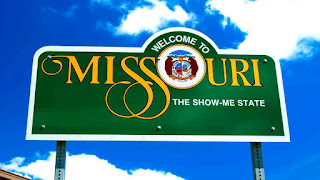

He used it with modified 8mm film and audio cassette recorders at the Massachusetts Institute of Technology in the early 1970s - but We can thank documentary filmmaker Richard Leacock for introducing this use of crystal control. The timing of modern video cameras and digital audio recorders is set by precise quartz-crystal electronic clocks. Here is a still of the frame of the video where my hands come together: You see and hear the hand clap, and then hear my short announcement identifying the take. My camera is looking forward at him and his is looking back at me. The picture-in-picture is from a camera duct-taped to the rear rack of a friend's bicycle. In the short video clip above, the main image is from a camera on my helmet. With cameras in other locations, I walk around and clap so my hands are also visible in my helmet camera. If I am using two cameras on my helmet to get front and rear views, I back up to a window so the rear-facing camera shows the reflection of my clapping hands, or I tap the side of the helmet to shake the image from the helmet camera and make a sound. For synchronization, I use a hand clap, visible to every camera and recorded in every sound track. I use video cameras which record audio, so there's no need for a clapperboard's written identification of the take. Once clips are aligned on the editing table, they remain in sync. The speed of sprocketed film and audio tape is set by the power-line frequency. The clapperboard provides a timing reference at the start of a take. The clapperboard – with its chalkboard to indicate a take number – is the time-honored time-alignment tool in the motion-picture industry. Bicycle video takes are generally rather long – you start recording, and then ride – so setting this marker isn't much of an inconvenience. We fall back on the classic synchronizing technique used in film: a marker visible in the image and audible in the sound track. How do we synchronize when shooting on a budget, lacking time code? I expect that a smartphone app will be offering GPS timing sooner rather than later, but smartphone cameras are rather limited, and this feature would be more useful in a dedicated camera. Some newer action cameras record a GPS track and time stamp, which may be used to align recordings in post-processing. GPS can also identify the location of a device to within a few meters, and the direction in which a camera is pointing, if it is moving. GPS can synchronize any number of cameras, anywhere on Planet Earth.

This only works where GPS signals can penetrate - generally, not inside buildings - and is expensive and complicated to use.
HOW TO MAKE CREDITS IN PINNACLE STUDIO 16 ULTIMATE CODE
Some professional-grade equipment derives time code from GPS satellite signals. Time code also may be sent and received using wireless devices, but as of now, no consumer-grade action camera supports this feature.

Time code can control the playback speed of analog audio tape, and can fast-forward and rewind tapes to synchronize them with each other. Time code traditionally uses a timing signal sent over cables and recorded along with the audio and video. If you are in the market for cameras, you might check for this feature.Ī high-tech way to synchronize video and audio recordings is called time code. Wi-fi will work with cameras on a single bicycle, controlled by the rider, or with people riding within a few meters of one another. Control may offer simultaneous starting and stopping, and even multiple views on a screen. Control of some of the newer action cameras, more than one at a time, is possible using wi-fi with a dedicated controller or smartphone.


 0 kommentar(er)
0 kommentar(er)
